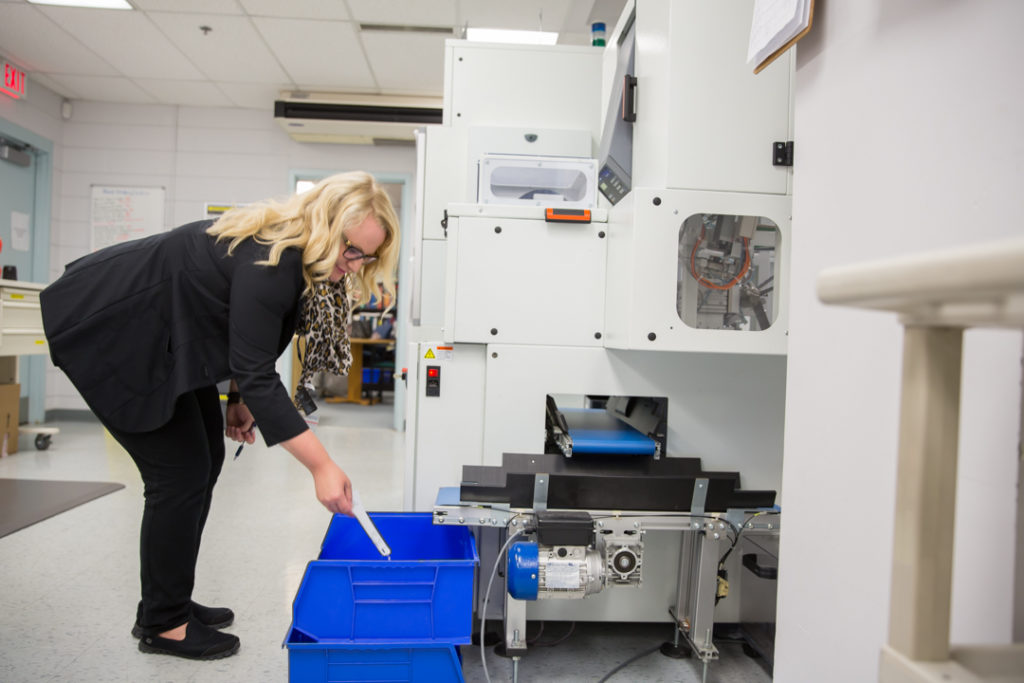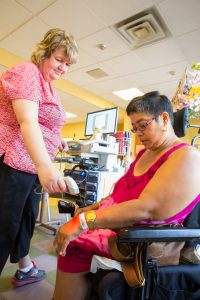
Scanning for medication safety
It’s not uncommon for a patient in the hospital to take more than ten medications a day. Keeping track of individual doses, schedules and delivery methods is very complicated and requires exceptional communication between pharmacy and nursing staff.
Recently, St. Peter’s Hospital (SPH) took a huge leap towards streamlining this process. The site has transitioned to using an Electronic Medication Administration Record (eMAR) and Bedside Medication Verification (BMV) system to administer medication.
“By taking away opportunity for error, we’re improving patient safety.”
“With the previous system, there were two processes occurring at once—paper and electronic—which created more opportunities for medication errors to occur,” says Gidget Carlin, a clinical informatics specialist who led the project on behalf of Health Information Technology Services. “We’ve eliminated many of those concerns by streamlining to one process that uses a pharmacy and nursing-shared electronic system.”

In the new system, the pharmacist reviews the prescriber’s written order and enters it into the eMAR. The nurse then compares this entry against the written order to ensure they match. The nurse can request corrections or modifications to the eMAR in an electronic message to the pharmacist.
The pharmacist’s computer entry also triggers the medication distribution system. At SPH, the majority of medications are dispensed by a robot that prepares an individualized 24-hour supply for each patient.
“We’re eliminating a lot of the room for human error,” says Krystin Szymkiewicz, manager of pharmacy at SPH. “By taking away opportunity for error, we’re improving patient safety.”
 A third security checkpoint in the system comes when the medication is delivered. All medication coming out of the pharmacy is barcoded, and each patient wears a barcoded wrist band. The nurse administering the medication scans both barcodes to verify that the patient is receiving the correct medication.
A third security checkpoint in the system comes when the medication is delivered. All medication coming out of the pharmacy is barcoded, and each patient wears a barcoded wrist band. The nurse administering the medication scans both barcodes to verify that the patient is receiving the correct medication.
“The barcode pairs up with the electronic system and checks five factors,” Carlin says. “It ensures the right medication and dose is being delivered to the right patient at the right time via the right route.”
This automated checking process frees up the nursing staff to focus on other assessments that could affect whether or not a patient should receive the medication.
“We’ve automated parts of the process to reduce risk of human error, and opportunities for medication error,” Carlin says. “The other benefit is that staff can focus on what technology can’t do, such as educating patients about their care and monitoring the effectiveness of the medications they are receiving.”
Research shows that this technology can reduce preventable medication errors by up to 50 per cent. At SPH, it has already captured hundreds of potential near misses.
